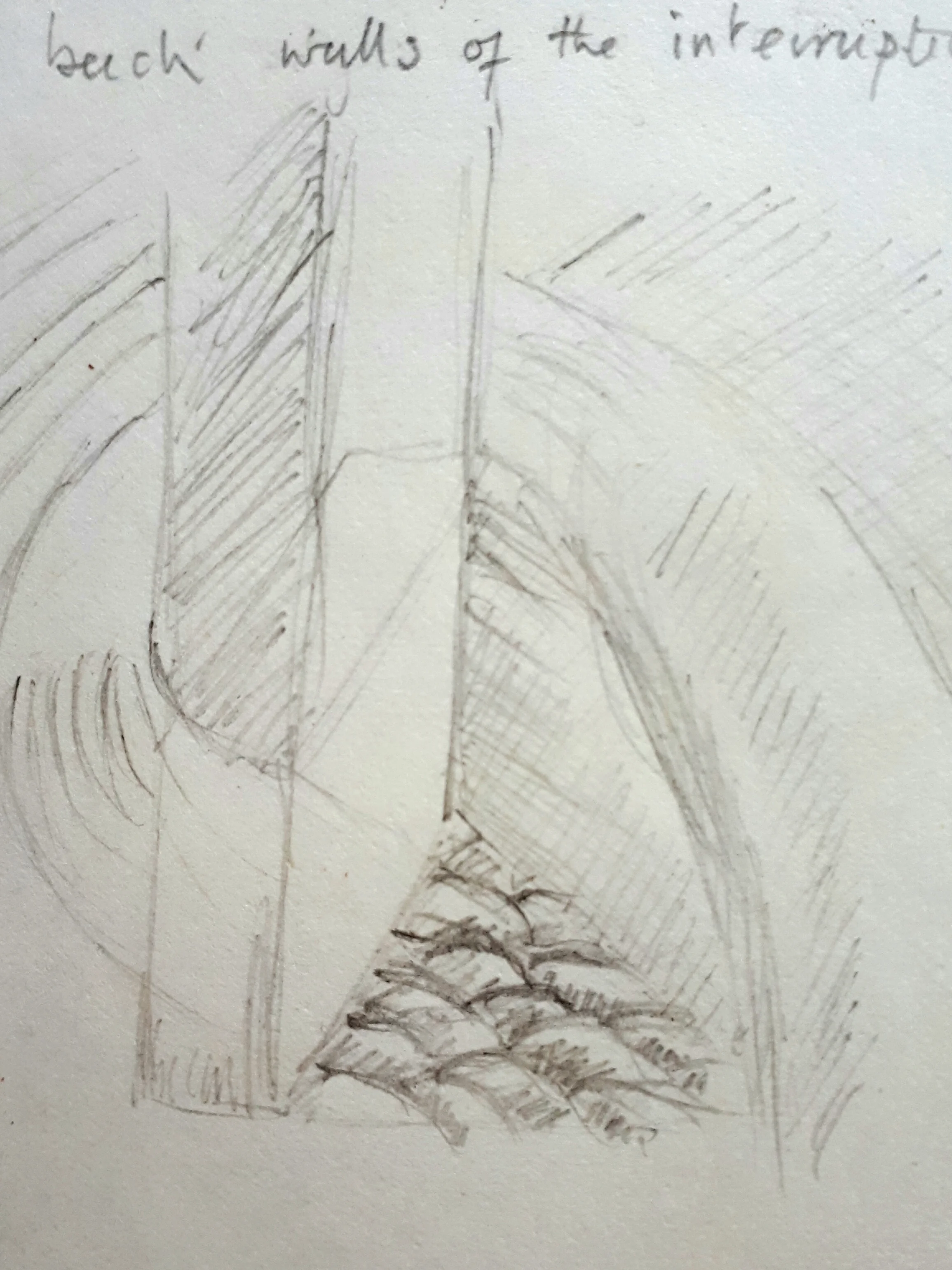Drawing from Memory: CAMBRIDGE, 1979
I found these water drawings in the back of one of my old sketch books a few months ago.
I had forgotten about them but as I flicked through and re-read the commentary I was interested to notice that they were reconstructed from memory.
They are more schematic than if they had been drawn from life. I present them in this Blarney because they seem to demonstrate a method of working which was more often practised in the past than now, which was to look very carefully at something for a long time and then absent yourself from that event and attempt to reconfigure the process you were watching.
The place where they were sourced from was the old Weir and sluice gates at the Millpond in Cambridge where I grew up. I suspect the Cambridge City Council may have cleaned up the old wood and brick framework in the name of tidiness since then, but I hope not.
I will quote from the comments I made with the drawings at the time.
"20th April, 1979. Exercise. To go out several mornings in succession and observe the same flows and attempt to reconstruct them from memory. Day cool and damp after rain."
"Where one powerful fall is enclosed in a trench the water boils along the hollow created between the water falling into the trench and the same water rising up the wall opposite, reversing its flow and falling down again.
Where the two downward flows meet, a continuous rearing margin of water and bubbles rises above and is forced irregularly along the channel in between their opposing flows."
"These are the surface gatherings of the fast currents but a continuous flat sheet of water flows more slowly underneath them, striated by irregularities on the floor of the Millrace."
"As the water gathers from a slow current in the pool to a rapid one in falling over the oak planks that form the weir it creates a vacuum underneath the water into which air is drawn back by suction along the tops of the planks.
"If a jet of water is created by angling a plank into the surface of the fall, a thin flat sheet of water is deflected outward from the race and bowed into a curve by the air pressure underneath it. The edges of the sheet gather into a thicker margin of droplets and fruity swellings which travel backward slowly, relative to the rapid forward movement of the centre of the sheet.
"Or if the same plank is drawn rapidly through the still surface of the river, a similar thin transparent sheet or part globe of water is raised from the surface, whose outer margins thicken into tendrils which extend and are nipped off into an even shower of droplets just before they rejoin the surface of the river."
"As a plank is lowered into the depth of untroubled water beginning its path over the weir the water divides and rejoins behind the interruption of the plank and an almost flat floor of water, cobbled by the irregularities in the sawn end of the plank is visible between the combed back walls of the interrupted flows."
"As the plank is pushed further down into the faster layers that skim the surface of the weir air is drawn in under the flow to the edge of the plank and the striations lengthen into ribs joined by thin webs like a Swan's foot."
"Where the main flow meets a lesser but faster one at an angle the main flow runs under the lesser one which is forced into a curving diagonal by the main current, foam rising and bubbling in the corner where the tops of the two flows meet and are forced against the brickwork into eddies and little whorls. Where the combined flows run flat down the sloping brick and meet the river below, little heads dance up and fold over one another like Bats fighting."
"Folding and Rippling. The iron sockets of the weir gate made hollows in the brickwork into which the water was deflected in circular eddies. As the eddies returned upon themselves and met the slipstream of the water in between them, very tiny and precise ripples like a Snake's scales trembled between the meeting of the opposing streams."
"This was a surface reverberation not affected by the mass flow of the water, or cuffs of water which rose fatly up the plank and folded back upon themselves into the river, creating the raised collars between which the little Snake scales were buffeted.
"When water from a rapid mill race enters a placid shallow pool it forces a long tongue into the still water that turns up and backwards into breaking wavelets as well as sideways into eddies and slower lateral swirls."
The little backward breaking wavelets peak above the level of the pool and the trough behind them is lower, the succession of reverberating swirls being carried 40 feet or more into the pond. There must be a reverse in the direction of the swirls under the peaks of the flow in order to raise the backward breaking wavelets above the level of the pool."









